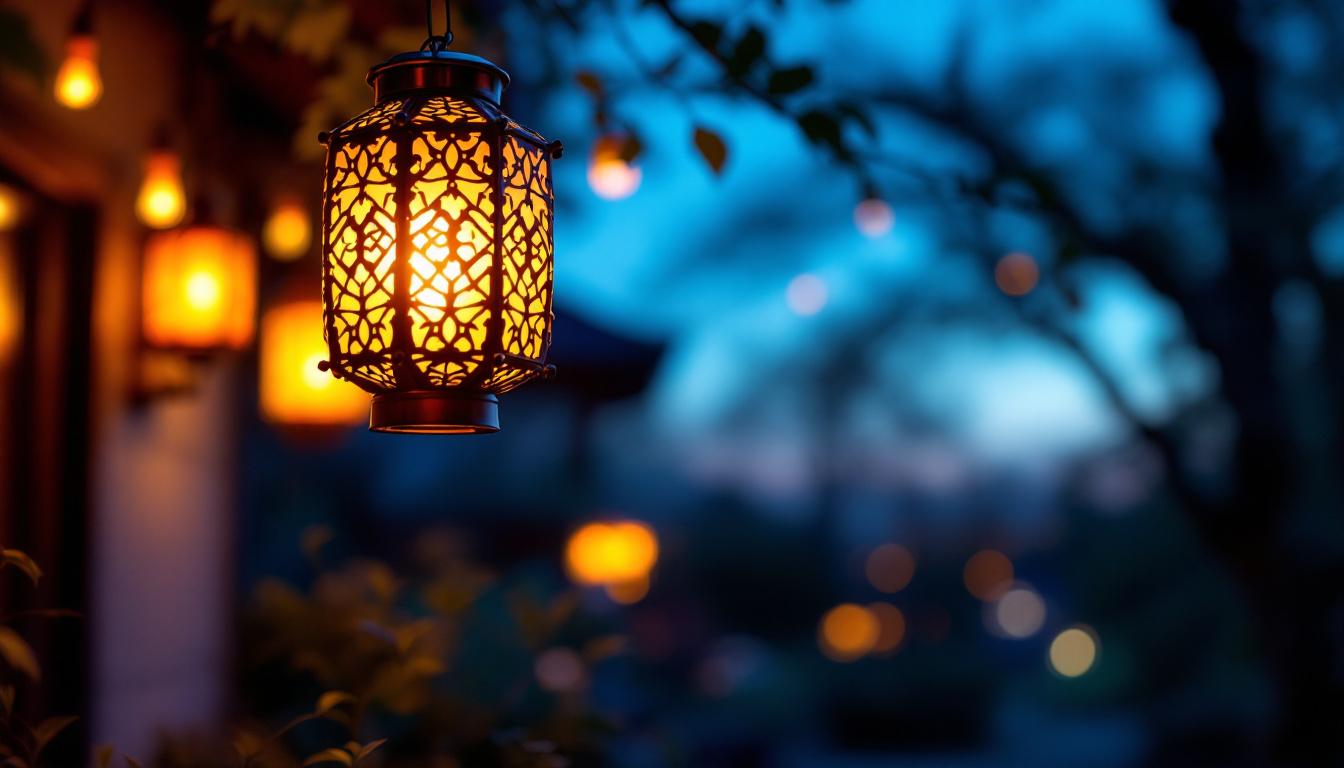
As outdoor spaces become extensions of living areas, the importance of effective landscape lighting cannot be overstated. For lighting contractors, understanding the nuances of backyard landscape lighting is crucial. This checklist serves as a comprehensive guide to ensure that every project not only meets client expectations but also enhances the beauty and functionality of outdoor spaces.
Before diving into the specifics of installation and design, it’s essential to grasp the fundamental principles of landscape lighting. This knowledge will help contractors create effective lighting solutions that are both aesthetically pleasing and functional. Understanding how light interacts with various surfaces and colors can significantly impact the overall effect of the lighting scheme. For instance, lighter surfaces tend to reflect more light, which can brighten an area, while darker surfaces absorb light, creating a more subdued ambiance. This interplay is vital for achieving the desired atmosphere in outdoor spaces.
Landscape lighting can be categorized into several types, each serving a unique purpose. Pathway lights illuminate walkways, ensuring safety while enhancing the ambiance. Spotlights focus on specific features, such as trees or sculptures, drawing attention to the most attractive elements of the landscape. Floodlights provide broader illumination, perfect for larger areas. Each type of lighting can be adjusted in terms of brightness and angle to achieve the best effect, allowing for a customized approach to each project.
Additionally, accent lighting can highlight architectural features or create dramatic effects at night. This type of lighting can transform a simple façade into a stunning visual display, enhancing the character of a home or building. Moreover, underwater lights can be used in ponds or pools to create a magical atmosphere, while string lights can add a whimsical touch to outdoor dining areas or patios. Understanding these types allows contractors to tailor their designs to meet the specific needs of their clients, ensuring that each space is both functional and visually appealing.
A well-thought-out lighting plan includes several crucial components. First, consider the layout of the landscape. Identify focal points, such as gardens, water features, or seating areas, that will benefit from illumination. Next, assess the existing natural light sources, like streetlights or nearby buildings, which can influence the overall design. This assessment helps in determining where additional lighting is necessary and how to best complement the existing light.
Finally, take into account the desired mood and functionality of the space. Whether the goal is to create a cozy atmosphere for entertaining or to ensure safety along pathways, these factors will guide the selection of fixtures and placement. Additionally, it’s important to consider energy efficiency and the longevity of the lighting solutions. LED fixtures, for example, offer a sustainable option that consumes less power and lasts significantly longer than traditional bulbs. By incorporating these considerations into the lighting plan, contractors can ensure that their designs are not only beautiful but also environmentally responsible and cost-effective for their clients.
Designing an effective landscape lighting scheme requires a balance between aesthetics and functionality. Contractors must consider various elements to create a harmonious and inviting outdoor space.
Layering light is a technique that involves using multiple light sources at different levels to create depth and dimension. This approach can transform a flat landscape into a visually dynamic environment. For instance, combining ambient lighting with task and accent lighting allows for versatility in how the space can be used at night.
Contractors should aim for a mix of lighting types to achieve a balanced look. Ambient lighting provides general illumination, while task lighting focuses on specific areas, and accent lighting highlights features. This layered approach not only enhances the beauty of the landscape but also improves safety and usability. Additionally, incorporating dimmers into the design can provide further control over the intensity of the lighting, allowing homeowners to adjust the ambiance according to different occasions, whether it’s a quiet evening outdoors or a lively gathering with friends and family.
The selection of lighting fixtures is a critical aspect of landscape lighting design. Contractors should consider the style and finish of the fixtures to ensure they complement the overall aesthetic of the property. Options range from modern, sleek designs to more traditional fixtures that evoke a classic charm.
In addition to style, energy efficiency is a significant factor. LED fixtures are increasingly popular due to their longevity and low energy consumption. Contractors should also consider the brightness and color temperature of the lights, as these elements can dramatically affect the ambiance of the space. For example, warm white lights can create a cozy and inviting atmosphere, perfect for relaxing evenings, while cooler tones may be more suitable for highlighting architectural features or creating a more contemporary vibe. Furthermore, the placement of these fixtures should be carefully planned to avoid harsh shadows or overly bright spots, ensuring a seamless flow of light throughout the landscape.
Once the design is finalized, the installation process begins. Following best practices during installation is essential for achieving optimal results and ensuring the longevity of the lighting system.
Before installation, it’s crucial to plan the layout carefully. Mark the locations of each fixture based on the lighting design. This step allows contractors to visualize the final outcome and make any necessary adjustments before digging or securing fixtures.
Consider the spacing between fixtures to avoid overcrowding, which can lead to harsh shadows or overly bright areas. A general rule of thumb is to space pathway lights about 6 to 8 feet apart, while accent lights can be placed closer together to create a more concentrated effect.
Safety is paramount when dealing with electrical installations. Contractors should ensure that all wiring is buried at the appropriate depth to prevent damage and reduce the risk of accidents. Using low-voltage systems can enhance safety and simplify installation.
Additionally, it’s essential to follow local codes and regulations regarding electrical work. This includes obtaining necessary permits and ensuring that all installations are up to code. Proper grounding and the use of weather-resistant materials will also contribute to the safety and durability of the lighting system.
Contractors should recommend routine inspections to clients, ideally at the beginning of each season. During these inspections, check for any burned-out bulbs, damaged fixtures, or issues with wiring. Replacing bulbs promptly can prevent further damage and maintain the desired lighting effect.
Additionally, cleaning fixtures regularly will help maintain their brightness and appearance. Dirt and debris can accumulate over time, diminishing the effectiveness of the lighting. Simple cleaning solutions can often restore fixtures to their original condition.
Even with regular maintenance, issues may arise. Common problems include flickering lights, dim illumination, or complete outages. Contractors should be prepared to troubleshoot these issues effectively.
Flickering lights may indicate a loose connection or a failing transformer, while dim lights could be a sign of voltage drop or an issue with the bulb itself. In cases of complete outages, checking the circuit breaker and ensuring that all connections are secure is a good first step. Understanding these common issues will enable contractors to provide swift solutions and maintain client satisfaction.
Beyond the technical aspects of landscape lighting, enhancing the client experience is vital for building lasting relationships and securing future projects. Effective communication and understanding client needs can set a contractor apart in a competitive market.
Engaging clients in the design process is essential. Schedule consultations to discuss their vision, preferences, and any specific requirements. This collaborative approach not only fosters trust but also ensures that the final design aligns with their expectations.
Offering customization options, such as different fixture styles or control systems, allows clients to feel more invested in the project. Providing them with choices can lead to a more personalized outcome that reflects their unique tastes and lifestyle.
After completing a project, follow up with clients to ensure they are satisfied with the results. This simple gesture can leave a lasting impression and demonstrate a commitment to quality service. Address any concerns they may have and offer guidance on how to maintain their new lighting system.
Encouraging clients to share their experiences through testimonials or referrals can also help grow a contractor’s business. Satisfied clients are often the best source of new leads, so maintaining positive relationships is essential.
Backyard landscape lighting is an art that combines creativity, technical knowledge, and client engagement. For lighting contractors, following this comprehensive checklist can streamline the process from design to installation and maintenance. By understanding the basics, employing best practices, and enhancing the client experience, contractors can ensure successful projects that illuminate outdoor spaces beautifully.
Ultimately, the goal is to create outdoor environments that are not only functional but also inviting and aesthetically pleasing. With the right approach, landscape lighting can transform any backyard into a stunning retreat, offering clients a space to enjoy long after the sun sets.
Ready to elevate your landscape lighting projects with premium quality and value? Look no further than LumenWholesale, where we provide contractors with spec-grade lighting products at unbeatable wholesale prices. Our extensive selection not only meets but exceeds industry standards, ensuring that your outdoor environments shine with reliability and high performance. Say goodbye to inflated markups and hello to hassle-free bulk buying with free shipping. Make your next project a stunning retreat that delights clients well into the night. Discover the perfect blend of quality, affordability, and convenience at Wholesale Lighting at the Best Value.

Discover how solar-powered Soji lanterns are revolutionizing the lighting industry with their eco-friendly design and sustainable energy solutions.

Discover how LED floodlight solar technology is revolutionizing lighting design and installation.

Explore the top challenges lighting contractors face when illuminating display cabinets, from selecting the right fixtures to overcoming spatial constraints.

Discover why wall light switches are critical in lighting installations, enhancing safety, efficiency, and convenience.